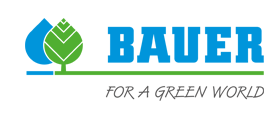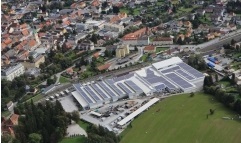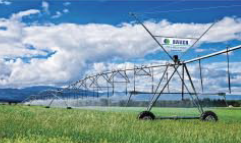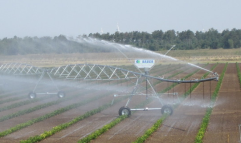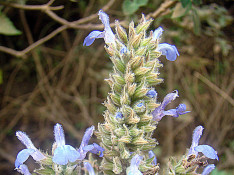Pivot in use for Chia plants
Chia on the sandy coast of Peru? Pivot makes it possible to meet this challenge.
In recent years, the consumption of chia seeds has became popular around the world. Thanks to its properties, this seed has become known as a source of fibre, antioxidants, calcium, protein and Omega-3. Previously, its cultivation was limited to elevated regions of the Andes where the climate facilitated the crop development and sporadic rainfalls covered a portion of the plant’s water needs.
The rising demand has motivated some agricultural entrepreneurs to attempt cultivation of chia in a region that was completely new for this crop: the Peruvian coast. One of these entrepreneurs is Jaime Wong Koosau, Director of AGRILAP S.A. In this area, one is confronted with sandy soils that are poorly suited for traditional irrigation and high temperatures of 39°C. Drip irrigation did not allow the required sowing density to be achieved; plant rows spaced at 0.8 m represented a very large investment.
The company “EQUIPOS DE RIEGO OLIVOS CORANDE”, representative of the BAUER GROUP in Perú, made an unusual recommendation for the chia cultivation: use of a pivot. This was followed by tests with irrigation systems mounted on a Center Pivot that showed no problems with fungal attack or rot. At the start of 2014, the world’s first Pivot for chia irrigation was installed. The installation and commissioning of the system was carried out by engineer Rafael Poma from Olivos Corande and an expert from Bauer Austria.
The system, designed for the irrigation of 53 ha, originally irrigated 39 ha with a sector of 270° and an irrigation amount between 5 and 8 mm, depending on the growth phase of the plants. The switch cabinet mounted to the Pivot ensures precise control and is very user-friendly, says Wilfredo Choque, director of the company. Based on the experience gained over two years, one of the most noteworthy advantages is the fertilization, explains the company director: “The plant absorbs nutrients not only through the roots but also through the leaves.” He further adds: “Thanks to this two-channel absorption of the nutrients, the efficiency of the fertilization is higher.” They used the same fertilizer formula as in the drip irrigation and were able to do so without problems.
Another advantage is the easy operation of the Pivot as well as the speed with which problems can be identified and corrected – in contrast to drip irrigation, where it is rather difficult to find blocked hoses. In two years of Pivot irrigation, not a single complication has arisen, confirms Choque. Another significant advantage is naturally the considerably lower investment costs. While Pivots range 1,200 – 1,500 €/ha with a lifespan of 20 years, drip irrigation ranges 3,000 to 4,000 €/ha and must be replaced every 3 years. Over a 20-year period, drip irrigation would cost €20,000 to €28,000, not to mention the negative environmental impact of the disposal of PE hoses. The use of the Pivot will definitely continue. For the next season, it has been decided to allow the pivot to operate in the full circle, increasing the chia cultivation to 53 ha.
